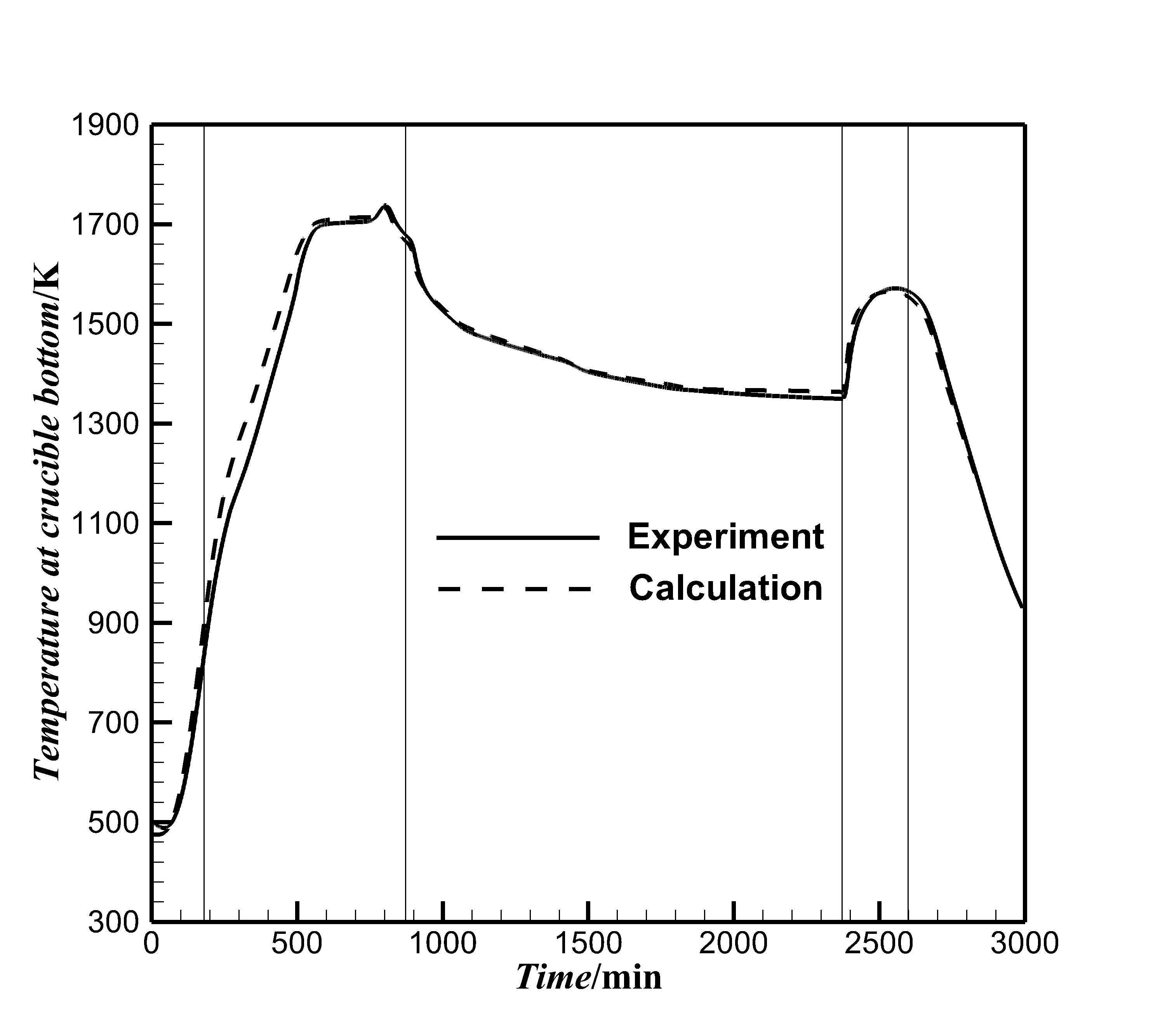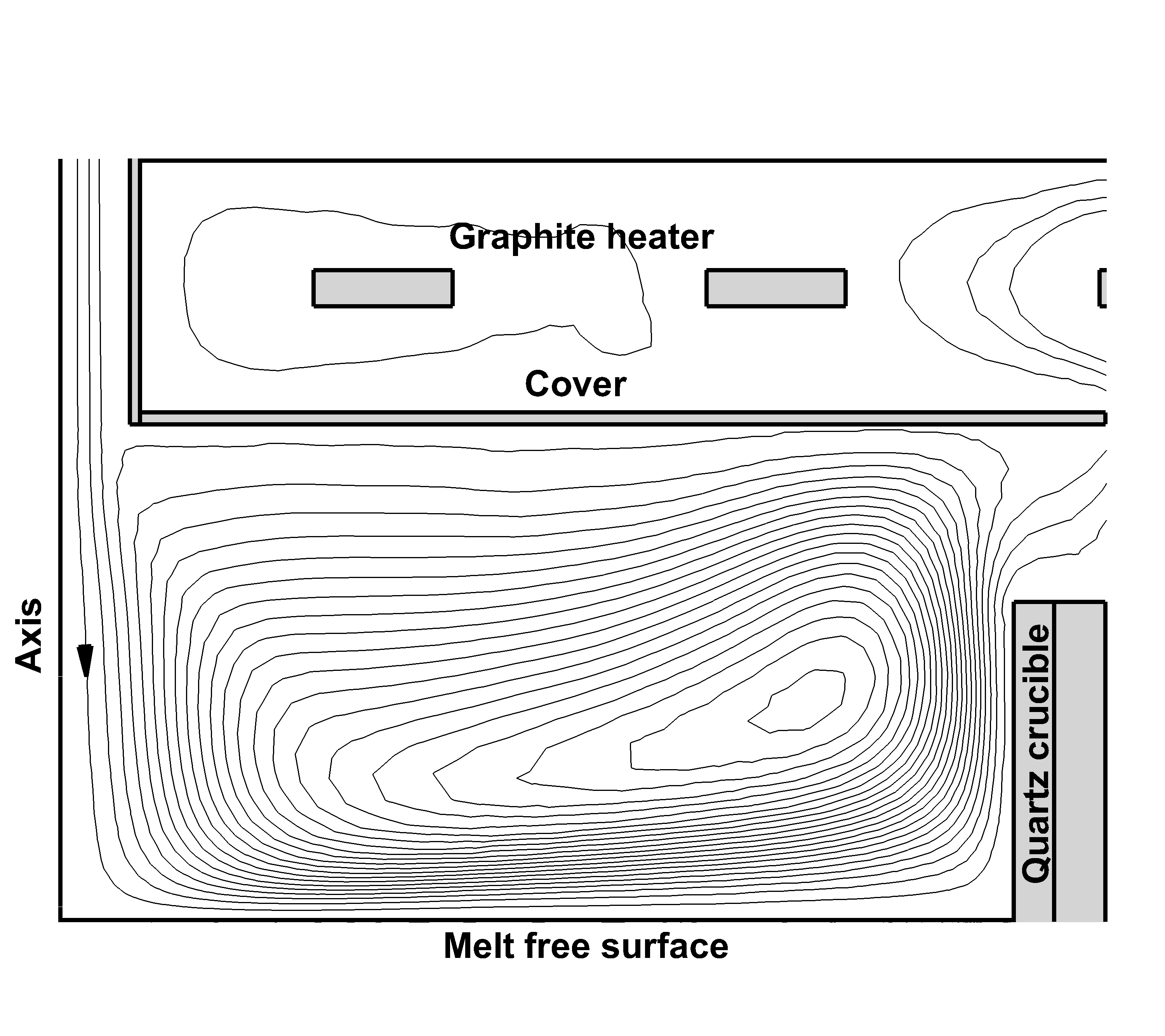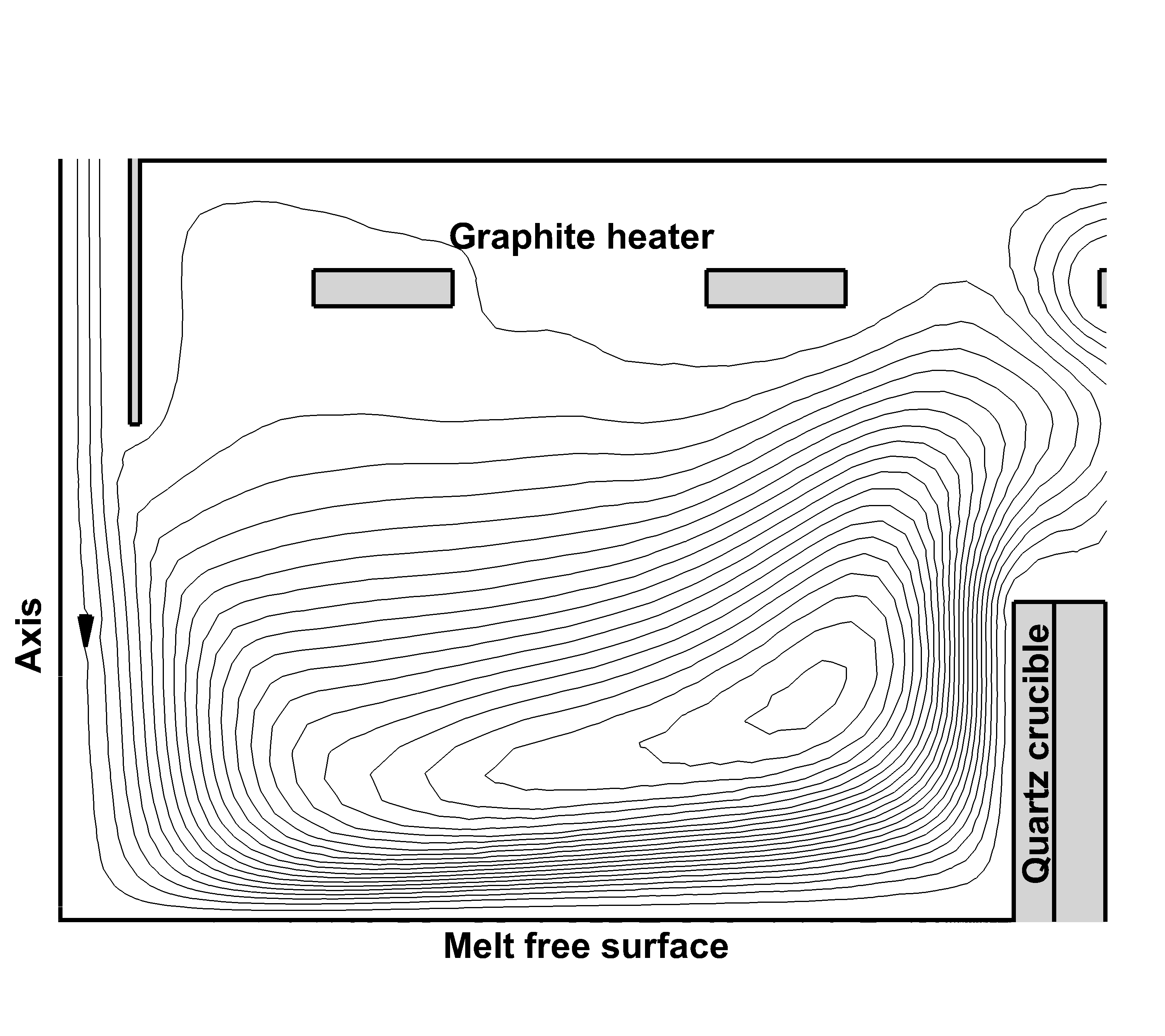| Search for content and authors |
Quantitative analysis of the cover effects on crystal growth in the industrial directional solidification process for silicon ingots |
| Zaoyang Li 1,2, Yunfeng Zhang 3, Zhiyan Hu 3, Genshu Zhou 2, Lijun Liu 1 |
|
1. School of Energy and Power Engineering, Xi'an Jiaotong University, Xi'an 710049, China |
| Abstract |
Directional solidification (DS) has been the main method to manufacture multi- and mono-crystalline silicon ingots for solar cells. The DS process is a highly coupled nonlinear thermal system with complex heat and mass transport. It includes solid thermal conduction, melt convection, argon flow, thermal radiation, phase change, as well as transport of oxygen, carbon and other impurities. These transport characteristics can influence the crystal growth of silicon ingots significantly [1]. Therefore, many measures are implemented to control the heat and mass transport in the DS process to optimize the crystal growth and improve the ingot quality. For the industrial 500 kg DS process, a cover is usually fixed above the crucible, which is different from the previous furnace for silicon ingots of 240 kg [2]. The cover can uniform the thermal field and change the gas flow pattern as well as the pathway of argon gas flow, which is of benefit to the impurities control. Gao et al. [3] did almost the same thing for a laboratory-scale DS furnace to reduce oxygen and carbon concentrations in the silicon ingots. Teng et al. [4] investigated the cover effects on thermal field and oxygen distribution when crystal grows. As is known, the DS is a complex process including heating, melting, growing, annealing and cooling stages. However, few studies have been published regarding the cover’s effects on heat and mass transport through the entire DS process. In this paper, an industrial DS furnace that can produce 500 kg ingots is chosen to undertake the numerical study. Transient simulations of global heat transfer, including melt convection, argon flow, thermal conduction, radiation and phase change, are carried out and validated by comparing with the industrial experiment. Fig.1 compares the temperature variation at the crucible bottom between numerical simulations and experimental data for the entire DS process. Four solid vertical lines divide the curve sections into heating, melting, growing, annealing and cooling stages. The numerical predictions agree satisfactorily with the experimental measurements. Therefore, the transient global heat transfer model can reproduce the entire industrial DS process for production of large-size silicon ingots. Fig.2 and Fig.3 show the stream lines of argon gas flow above the silicon melt for DS furnaces with and without a cover design. It is obvious that the cover can modify the argon flow pathway and thus affect the impurities transport. Furthermore, since the cover is fixed in the space between the graphite heaters and the silicon melt surface, radiant heat from the heaters to the silicon can be directly influenced. As the radiative heat transfer is dominant in high temperature environment, the crystal growth process for silicon ingots must be affected. Based on the above analysis, we quantitatively compare the power consumption, melting time and sequence, temperature distribution and solidification front surface shape, as well as thermal stress distribution after annealing for the entire DS processes with and without a cover design. The study can help us to deeply understand the important role of the cover effects on crystal growth through the entire industrial DS process for silicon ingots. 
Fig. 1 Comparison of simulations with experiment: temperature evolutions at crucible bottom. 
Fig. 2 Stream lines of argon gas flow above the silicon melt surface with a flat cover design. 
Fig. 3 Stream lines of argon gas flow above the silicon melt surface without a cover design. References: [1] P. Rudolph, Sel. Top. Cryst. Growth 1270 (2010) 107. |
| Legal notice |
|
| Related papers |
Presentation: Poster at 17th International Conference on Crystal Growth and Epitaxy - ICCGE-17, General Session 4, by Lijun LiuSee On-line Journal of 17th International Conference on Crystal Growth and Epitaxy - ICCGE-17 Submitted: 2013-04-06 12:35 Revised: 2013-07-19 19:56 |